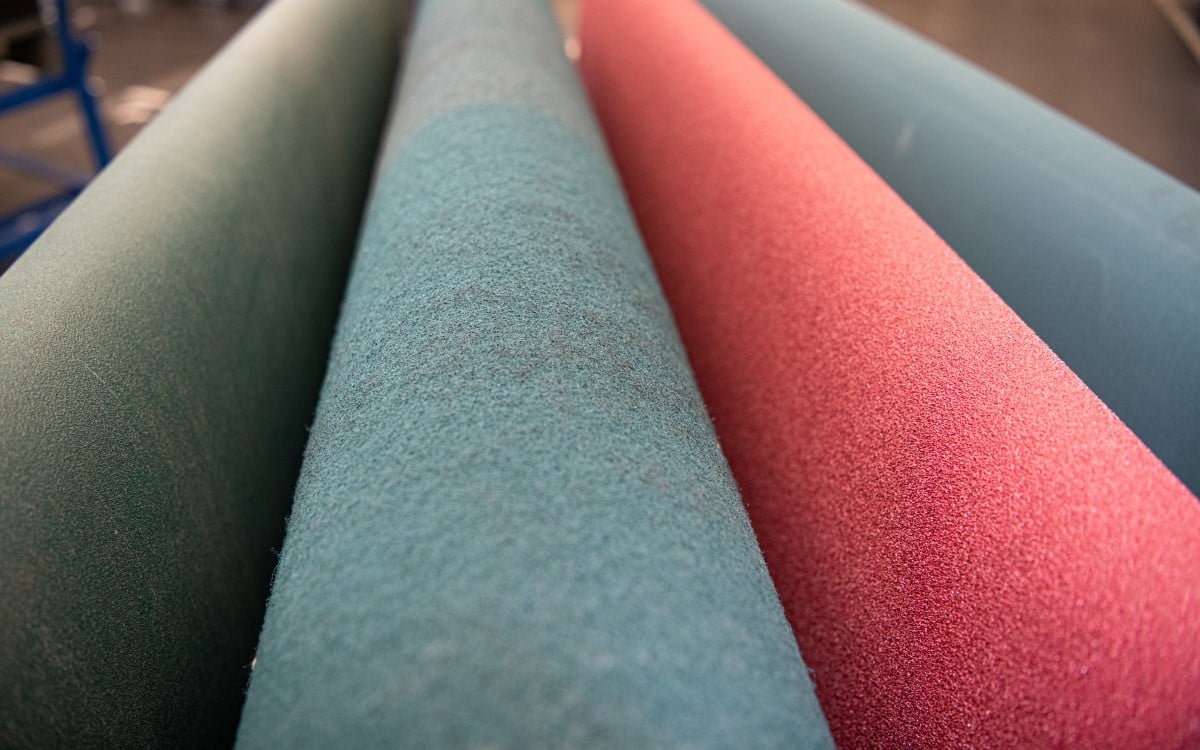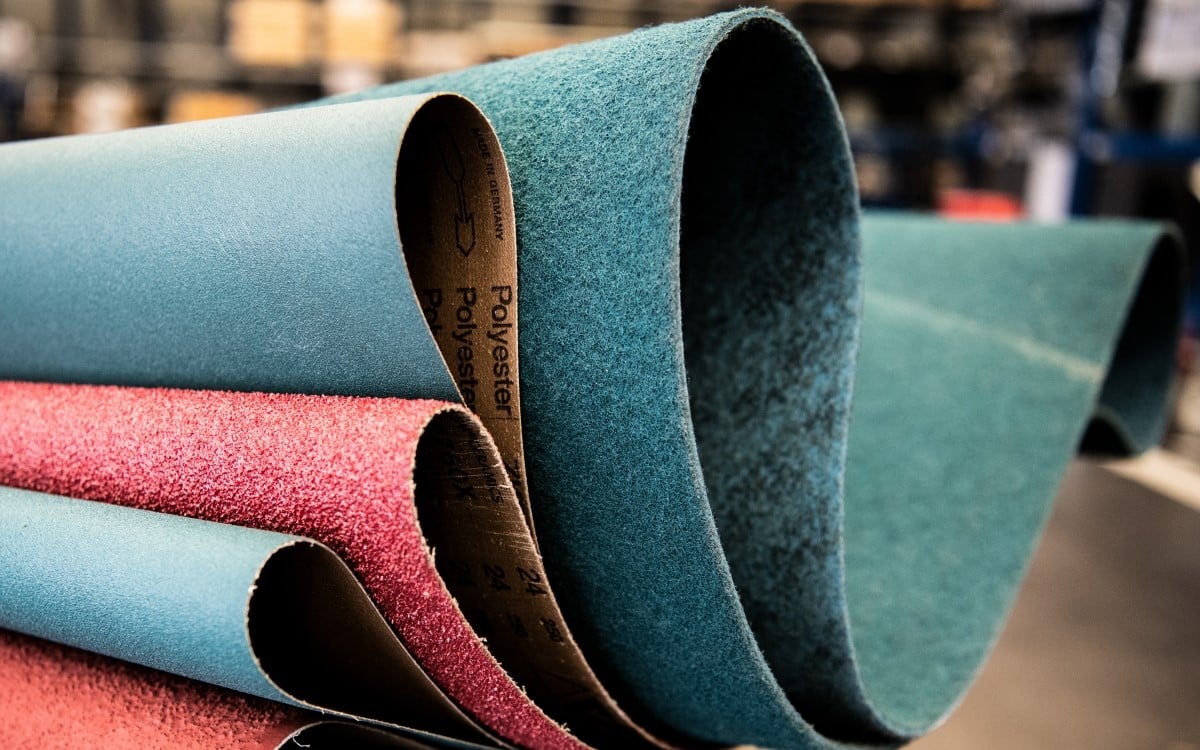There is a suitable grit type for every material
The first typical characteristic of abrasives is the grit type. This refers to the different minerals that remove the material during sanding. They are applied to the abrasive in the form of more or less small grains. The abrasive grain applied to the backing material largely determines the properties of the abrasive. There are various synthetically produced grit types that are used in abrasives. The most common grit types used in sheet metal deburring are
- Aluminum oxide:
Suitable for all materials and therefore often used in universal products. - Zirconium:
It offers a long service life thanks to its self-sharpening effect. This grit type is particularly suitable for deburring steel. - Ceramic:
This material offers a high stock removal rate and a long tool life. It is particularly suitable for stainless steels. - Silicon carbide:
Abrasives with this grit type are specially designed for deburring aluminum sheets.
Large grit sizes are particularly suitable for deburring and rounding
Each of these grit types is available in different grit sizes. Typical grit sizes for deburring and rounding sheet metal are between 40 and 180. The influence of the grit size on the sanding result is very clear: the larger the grit size of an abrasive, the stronger and coarser the abrasion. This is why large grit sizes tend to be selected for deburring or strong rounding. A small grit size, on the other hand, produces less abrasion but a finer surface. For this reason, grit sizes larger than 180 are also used for surface finishing.

The finer the sheet metal to be processed, the more flexible the abrasive cloth should be
The backing material for the abrasive grain in deburring tools for sheet metal processing is the abrasive cloth. This is more robust and therefore more durable than the abrasive paper used in the trade. The flexibility of the abrasives can be adjusted by varying the abrasive cloth. The combination of grit type, grit size and abrasive cloth defines the individual properties of many deburring tools. More robust abrasive cloths are usually used for coarse abrasives or thick sheets, while more flexible cloth types are generally more suitable for thin sheets.
The shape of the abrasives has a major influence on the removal rate
The shape of the abrasives also influences the effectiveness of the deburring and rounding tools. Fine flaps, for example, grip the inner contours of sheet metal better than wider flaps. The wide flaps have a higher removal rate on long edges. The so-called slitting of the abrasive flaps in thickness and shape therefore gives a sanding tool its final characteristics. The angle at which the abrasives hit the edges also influences the removal rate.
Abrasive flaps are particularly suitable for edge rounding and or surface finishing
Another factor is the abrasive fleece. These are fibers interspersed with abrasive grain. They are mainly used in tools for edge rounding. On the one hand, they provide the removal rate and, on the other, they support the individual abrasive cloths in relation to each other, for example in disk tools or rounding blocks. Only the right combination of abrasive fleece and abrasive cloth gives the tool its specific characteristics for rounding sheet metal edges.

Various arrangements of the abrasives in the tool are possible
The term "fill types" describes the different ways of arranging the abrasives in the tool. Common distinctions are, for example, single-row or multi-row disc tools. A multi-row arrangement of abrasives produces more even sanding results. The angle or density of the fill can also be varied.

Conclusion:
The tools for deburring and rounding sheet metal edges differ in six factors. They determine the specific properties and performance of a sanding tool. Generally speaking, zirconium is particularly suitable for steel, ceramic for stainless steel and silicon carbide for aluminum. The all-rounder is aluminum oxide. In terms of grit sizes, larger grits are better suited to coarse deburring and heavy rounding, while smaller grits are better suited to finer surface finishing. With regard to the abrasive cloth, robust cloths are better suited for thick sheets, while flexible cloths are more suitable for thin sheets. Other factors include abrasive shape, abrasive fleece and fill types. The right choice and combination of these factors are therefore important both for the result and for cost-effectiveness.
When it comes to finding the ideal tool for your specific application, we are happy to help. We can carry out tests with your parts and use various tools to determine the best solution. Based on these results, we create a calculation that shows the unit costs transparently. The optimum combination of machine and tool for the desired results increases the efficiency of machine deburring compared to the manual process and thus maximizes the profitability for your company.
Let's talk about it!



